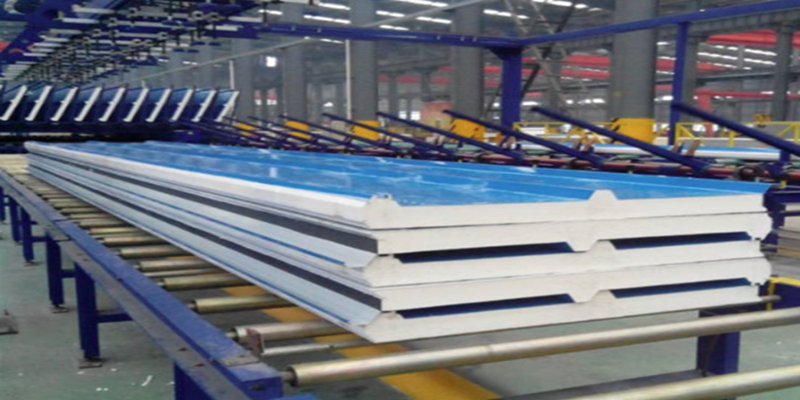Polyurethane catalysts play a crucial role in the production of polyurethane sandwich panels, which are widely used in various industries for their excellent insulation properties, structural strength, and lightweight nature. Understanding the application of these catalysts can provide insights into the manufacturing process and the benefits of using polyurethane sandwich panels.
What is a Sandwich Panel?
A sandwich panel typically consists of three layers: a low-density core made of polyurethane rigid foam and two outer sheets that provide structural support and protection. The core material, polyurethane rigid foam, is chosen for its superior thermal insulation properties, lightweight nature, and mechanical strength. The outer sheets can be made from various materials, including PPGI (pre-coated galvanized iron), PPGL (pre-coated aluminized zinc iron), aluminum sheets, or paper foils. These sheets are formed or slotted according to the requirements of a roller forming machine, creating a sturdy and insulated panel.
The Role of Polyurethane Catalysts
Polyurethane catalysts such as MXC-T and MXC-BDMA are essential in the production of polyurethane rigid foam, which forms the core of sandwich panels. These catalysts facilitate the chemical reactions between the polyurethane precursors, enabling the formation of a high molecular weight polymer. Typically, four or more liquid components containing polyurethane precursors are metered and mixed during the processing stage to produce the polyurethane foam. The role of the catalysts is to accelerate these reactions, ensuring efficient and controlled foam formation.
Production Process
The production of polyurethane sandwich panels involves several stages:
1. Metering and Mixing: The liquid components containing polyurethane precursors are accurately metered and mixed. This step is crucial for achieving the desired foam characteristics.
2. Foaming Reaction: The mixed components undergo a foaming reaction, facilitated by the catalysts MXC-T and MXC-BDMA. The catalysts ensure that the reaction occurs at an optimal rate, producing a consistent and high-quality foam core.
3. Lamination: The foam core is laminated between two outer sheets, which are formed or slotted as per the requirements of the roller forming machine.
4. Curing: The assembled sandwich panel is cured to allow the foam to fully expand and adhere to the outer sheets, resulting in a strong and stable structure.
Advantages of Polyurethane Sandwich Panels
1. Thermal Insulation: Polyurethane rigid foam offers excellent thermal insulation, making sandwich panels ideal for applications where temperature control is crucial.
2. Structural Strength: The combination of a rigid foam core and durable outer sheets provides high structural strength, making the panels suitable for load-bearing applications.
3. Lightweight: Despite their strength, polyurethane sandwich panels are lightweight, reducing transportation and installation costs.
4. Versatility: These panels can be used in a variety of applications, including building construction, refrigeration units, and transportation.
Conclusion
Polyurethane catalysts like MXC-T and MXC-BDMA are integral to the production of high-quality polyurethane sandwich panels. These panels offer a range of benefits, including excellent thermal insulation, structural strength, and versatility. Understanding the role of catalysts in the manufacturing process highlights the importance of precise chemical reactions in producing materials that meet industry standards and application requirements. As a supplier of polyurethane catalysts, we ensure that our products contribute to the efficient and effective production of polyurethane sandwich panels, supporting various industries in achieving their insulation and structural goals.
Post time: Jul-18-2024

